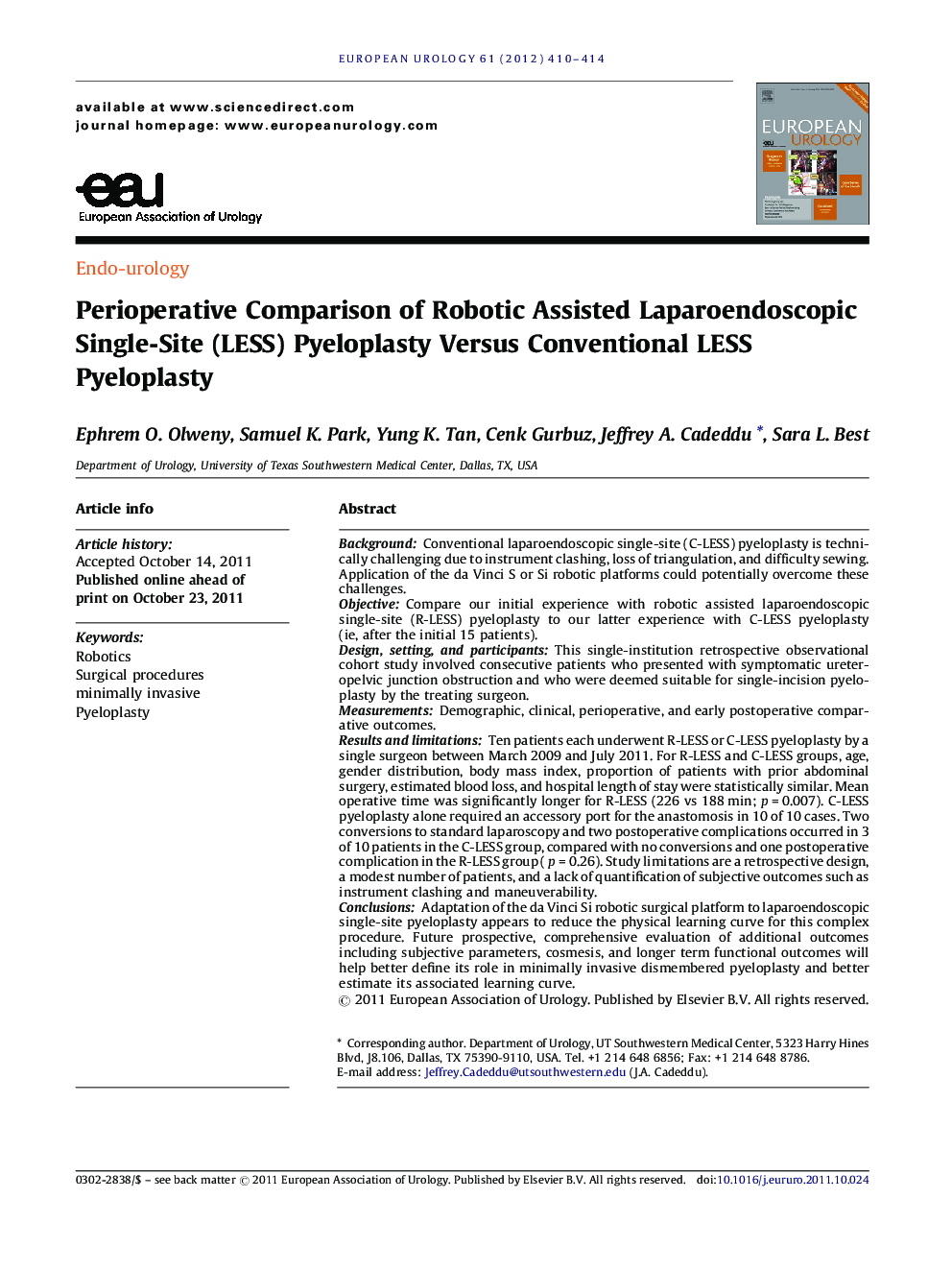| کد مقاله | کد نشریه | سال انتشار | مقاله انگلیسی | نسخه تمام متن |
|---|---|---|---|---|
| 3924167 | 1253093 | 2012 | 5 صفحه PDF | دانلود رایگان |

BackgroundConventional laparoendoscopic single-site (C-LESS) pyeloplasty is technically challenging due to instrument clashing, loss of triangulation, and difficulty sewing. Application of the da Vinci S or Si robotic platforms could potentially overcome these challenges.ObjectiveCompare our initial experience with robotic assisted laparoendoscopic single-site (R-LESS) pyeloplasty to our latter experience with C-LESS pyeloplasty (ie, after the initial 15 patients).Design, setting, and participantsThis single-institution retrospective observational cohort study involved consecutive patients who presented with symptomatic ureteropelvic junction obstruction and who were deemed suitable for single-incision pyeloplasty by the treating surgeon.MeasurementsDemographic, clinical, perioperative, and early postoperative comparative outcomes.Results and limitationsTen patients each underwent R-LESS or C-LESS pyeloplasty by a single surgeon between March 2009 and July 2011. For R-LESS and C-LESS groups, age, gender distribution, body mass index, proportion of patients with prior abdominal surgery, estimated blood loss, and hospital length of stay were statistically similar. Mean operative time was significantly longer for R-LESS (226 vs 188 min; p = 0.007). C-LESS pyeloplasty alone required an accessory port for the anastomosis in 10 of 10 cases. Two conversions to standard laparoscopy and two postoperative complications occurred in 3 of 10 patients in the C-LESS group, compared with no conversions and one postoperative complication in the R-LESS group (p = 0.26). Study limitations are a retrospective design, a modest number of patients, and a lack of quantification of subjective outcomes such as instrument clashing and maneuverability.ConclusionsAdaptation of the da Vinci Si robotic surgical platform to laparoendoscopic single-site pyeloplasty appears to reduce the physical learning curve for this complex procedure. Future prospective, comprehensive evaluation of additional outcomes including subjective parameters, cosmesis, and longer term functional outcomes will help better define its role in minimally invasive dismembered pyeloplasty and better estimate its associated learning curve.
Journal: European Urology - Volume 61, Issue 2, February 2012, Pages 410–414